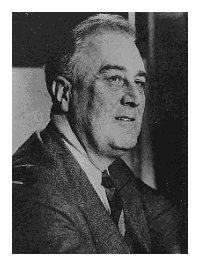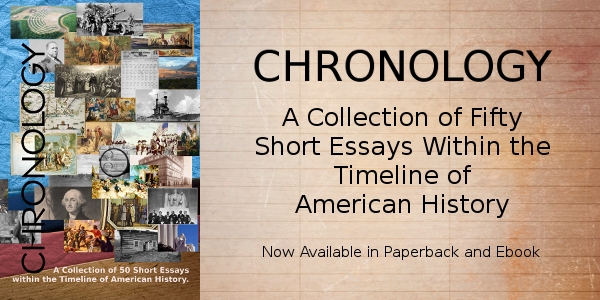Sponsor this page. Your banner or text ad can fill the space above.
Click here to Sponsor the page and how to reserve your ad.
-
Timeline
1930 - Detail
August 12, 1930 - Technology moves forward. Clarence Birdseye invents frozen food with his quick-freezing process and patents the concept. Also in 1930, the analog computer, or differential analyzer, is invented at the Massachusetts Institute of Technology in Boston by Vannevar Bush. Bush is also considered a pioneer in the development of the concept for the World Wide Web, with his idea for the memex.

Sometimes it's hard to imagine doing without either of these two inventions, despite the fact that they are totally opposite industries and concepts and inventions. One, is now a staple of the food industry, making it unnecessary to consume food only when it's picked and fresh. The other, the computer, whether in its early analog, differential analyzer state, or its eventual state over the internet, on our phones, or as our typewriters. Yes, at one time, not too long ago, there were typewriters.
Clarence Birdseye had always been interested in science, at one time bugs, and worked for the United States Agriculture Department as a naturalist while in and out of college. From 1912 to 1915, he began working as a fur trader in Newfoundland, a Dominion then, but now part of Canada, and gained an interest in food preservation by fast freezing. From the Inuit, he learned to ice fish in negative forty degrees, and noticed that the fish, which froze immediately in those temperatues, tasted completely fresh when thawed. If he could freeze food that fast, well beyond the slow freezing methods that were, at the time, currently used, Birdseye would solve a specific problem in the food industry.
Experiments were conducted in 1922 as Clarence established Birdseye Seaford Company. It failed. Birdseye perfected his method and established another company, General Seaford Company. This company succeeded. His new method for a Quick Freeze Machine was patented, US Patent #1,773,079, on August 12, 1930, only one of the one hundred and sixty eight that were eventually patented about the processes, and by 1927, it had been expanded to include fast freezing of poultry, vegetables, and fruit. Two years later, Birdseye sold the patents and business for $22 million to Goldman Sachs and Postum, the Post Cereal Company. They transformed General Seaford into General Foods with a division for Birds Eye Frozen Food Company. Clarence worked for the firm after selling. By 1930, the first consumer products were test marketed in eighteen retail locations; they were a big hit.
Vannevar Bush and the Analog Computer
While studying at Tufts College for his undergraduate and master's degrees, Bush was already inventing, patenting equipment for surveyors as his Master's Thesis. By the time he had graduated with his Doctorate in electrical engineering from M.I.T. and Harvard in 1916, Vannevar Bush was accomplished. Subsequent jobs took him back to Tufts, the American Radio and Research Corporation (AMRAD) backed by J.P. Morgan, the National Research Council during World War I, then M.I.T. By 1924, Bush and colleagues Lawrence K. Marshall and Charles G. Smith had developed the S-Tube, allowing radios to run on AC. Their company, American Appliance Company, eventually known as Raytheon, marketed the invention, and became a large elecronics firm with work in the defense industry. It made them wealthy.
Bush began working on an analog computer in 1927, often with graduate students under his tutelage at M.I.T.. The differential analyzer could take eighteen variables and solve differential equations. This was extended to second order equations, using both mechanical and electrical components, and by 1931, had extended to the ability to solve sixth order differential equations or three simultaneous equstions of the second order.
Vannevar Bush would eventually rise through the scientific ranks that far surpassed the invention he was working on in 1930, heading the National Defense Research Council, which he had proposed, and gotten approved, by President Franklin Delano Roosevelt on June 27, 1940, in the midst of World War II consuming the European theater. Bush considered technology the only way to win the war that the United States was not yet fully engaged. He would go on to serve significant roles in the creation of the Office of Scientific Research and Development, the Joint New Weapons Committee, and the Manhattan Engineering District, run by the Army, that would lead to the atomic bomb.
Photo above: Montage of Clarence Birdseye, 1910, and the patent image of the Quick Freeze Machine, patent issued in 1930. Courtesy Wikipedia Commons and Google Patents. Below: Montage of a Differential Analyzer at Cambridge, 1938, and Vannevar Bush, circa 1940-1945, Office of War Information. Courtesy Wikipedia Commons and the Library of Congress. Info Source: Library of Congress; Amherst College; Birdseye.com; Vannevar Bush, a Biographical Memoir by Jerome B. Wiesner, 1979, National Academy of Sciences; Wikipedia Commons.


History Photo Bomb

Clarence Birdseye had always been interested in science, at one time bugs, and worked for the United States Agriculture Department as a naturalist while in and out of college. From 1912 to 1915, he began working as a fur trader in Newfoundland, a Dominion then, but now part of Canada, and gained an interest in food preservation by fast freezing. From the Inuit, he learned to ice fish in negative forty degrees, and noticed that the fish, which froze immediately in those temperatues, tasted completely fresh when thawed. If he could freeze food that fast, well beyond the slow freezing methods that were, at the time, currently used, Birdseye would solve a specific problem in the food industry.
Experiments were conducted in 1922 as Clarence established Birdseye Seaford Company. It failed. Birdseye perfected his method and established another company, General Seaford Company. This company succeeded. His new method for a Quick Freeze Machine was patented, US Patent #1,773,079, on August 12, 1930, only one of the one hundred and sixty eight that were eventually patented about the processes, and by 1927, it had been expanded to include fast freezing of poultry, vegetables, and fruit. Two years later, Birdseye sold the patents and business for $22 million to Goldman Sachs and Postum, the Post Cereal Company. They transformed General Seaford into General Foods with a division for Birds Eye Frozen Food Company. Clarence worked for the firm after selling. By 1930, the first consumer products were test marketed in eighteen retail locations; they were a big hit.
Bush began working on an analog computer in 1927, often with graduate students under his tutelage at M.I.T.. The differential analyzer could take eighteen variables and solve differential equations. This was extended to second order equations, using both mechanical and electrical components, and by 1931, had extended to the ability to solve sixth order differential equations or three simultaneous equstions of the second order.
Vannevar Bush would eventually rise through the scientific ranks that far surpassed the invention he was working on in 1930, heading the National Defense Research Council, which he had proposed, and gotten approved, by President Franklin Delano Roosevelt on June 27, 1940, in the midst of World War II consuming the European theater. Bush considered technology the only way to win the war that the United States was not yet fully engaged. He would go on to serve significant roles in the creation of the Office of Scientific Research and Development, the Joint New Weapons Committee, and the Manhattan Engineering District, run by the Army, that would lead to the atomic bomb.
Photo above: Montage of Clarence Birdseye, 1910, and the patent image of the Quick Freeze Machine, patent issued in 1930. Courtesy Wikipedia Commons and Google Patents. Below: Montage of a Differential Analyzer at Cambridge, 1938, and Vannevar Bush, circa 1940-1945, Office of War Information. Courtesy Wikipedia Commons and the Library of Congress. Info Source: Library of Congress; Amherst College; Birdseye.com; Vannevar Bush, a Biographical Memoir by Jerome B. Wiesner, 1979, National Academy of Sciences; Wikipedia Commons.









